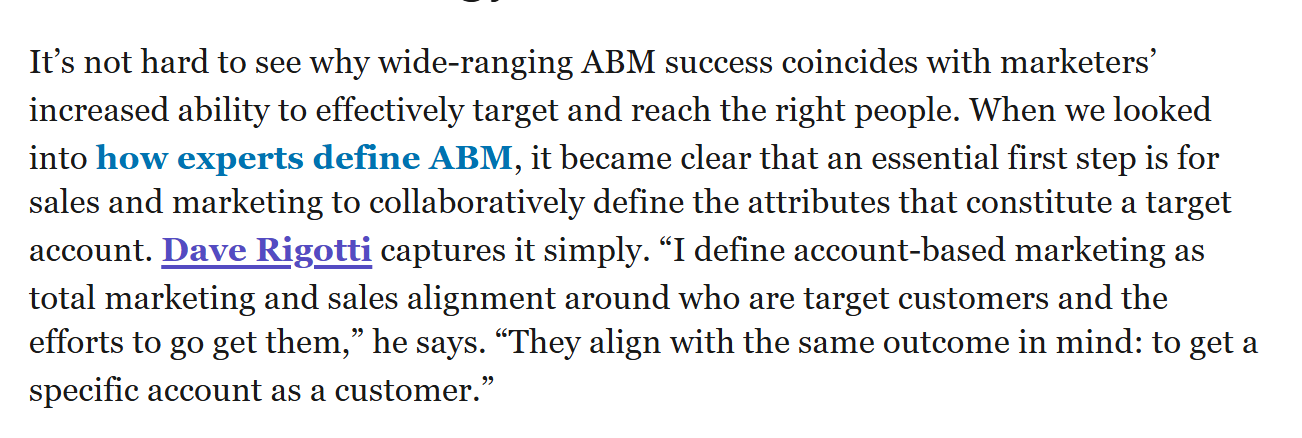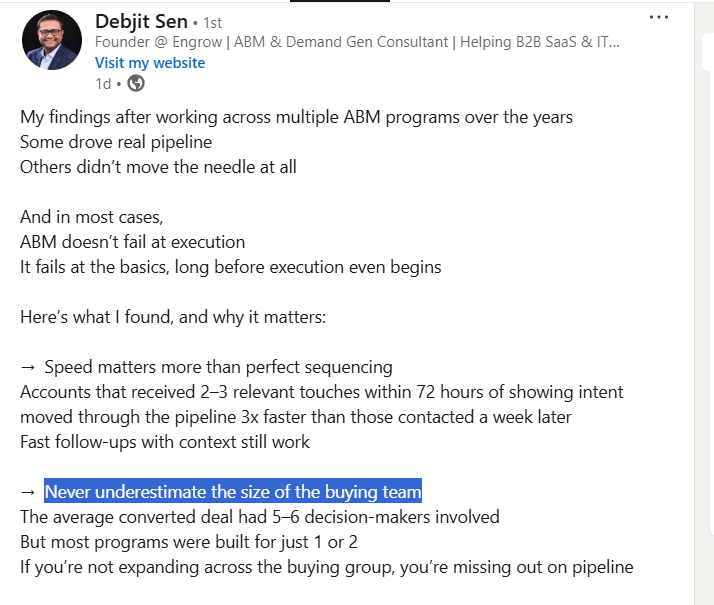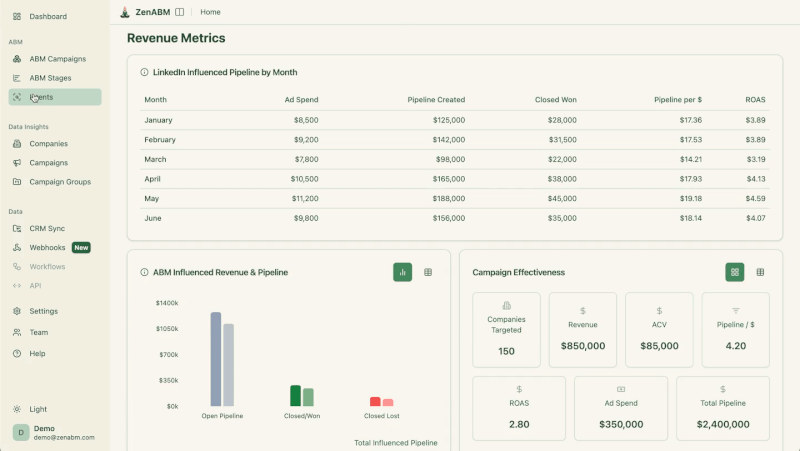
ABM isn’t just about logging engagement numbers. The real competitive edge lies in how well your account penetration strategy reaches deep and wide across the decision-making unit of your target accounts.
This becomes especially critical in enterprise deals where buying groups are sprawling (often 11 or more stakeholders are involved in the final decision).
Yet many B2B marketers still overlook this dimension and settle for surface-level engagement.
In this article, I’ll walk you through a complete playbook for building an effective ABM account penetration strategy.
And, along the way, I’ll show you how ZenABM makes this process smarter and more measurable.
Let’s dive in.

Breaking down silos across marketing, sales, and customer success is the foundation of any strong account penetration strategy. Without alignment, every outreach risks being fragmented, duplicative, or irrelevant.
Alignment ensures every interaction compounds penetration within the account rather than being wasted in silos.

GTM pro Eve Chen described in a LinkedIn post how alignment across sales, marketing, and CS doubled close rates in six months, improved deal velocity by 30%, and generated referral momentum from satisfied customers.
Unlike lead-gen, ABM thrives on shared ownership of target accounts. Marketing and sales must co-select the target account list and define ICP fit together. This shared foundation prevents finger-pointing and sets the stage for deeper account penetration.

Assign swimlanes. Marketing delivers deep research and persona-driven content. Sales builds relationships across multiple roles. Customer success nurtures advocacy and expansion from day one. A clear division keeps account penetration coordinated.
RevOps integrates platforms (CRM, automation, ABM tools) and creates one shared dashboard of engagement. With shared metrics like penetration rate, engagement score, and pipeline velocity, teams stay aligned and accountable.

Enterprise accounts don’t have lone decision-makers. Gartner research confirms the average B2B buying committee includes 11 people.
Single-threaded deals, where only one contact is engaged, have a 5% close rate, compared to 30% for multi-threaded ones (study).
That’s why a winning account penetration strategy always involves multi-threading: mapping, engaging, and nurturing every stakeholder with influence.
Identify economic buyers (CFO, CIO), influencers (department heads, IT leads), end users, and champions. Document their roles in your CRM to track coverage.
Each persona has unique pain points. CIOs want strategy and security. Engineers want technical deep dives. Match content accordingly.
Snowflake’s ABM program is a great example of role-specific personalization.
Don’t rely on a single channel. Mix LinkedIn, email, display ads, calls, direct mail, and executive roundtables. Emilia Korczynska (Userpilot) argues that events only work when embedded in ABM journeys and not as standalone tactics.
Coordinate touchpoints across Marketing (nurtures), BDRs (calls), and AEs (executive connects). Measure how many unique stakeholders you’re penetrating per account, and track seniority mix.
If you’re only talking to one person in a 10,000-employee enterprise, penetration is still near zero. True ABM success is measured by the breadth and depth of stakeholders engaged.
Personalization is the lever that makes penetration possible. Not generic tokens, but truly account-specific, persona- and stage-driven content that resonates.
Map messages across two axes: persona and buying stage. For example, awareness campaigns for product managers should highlight pain points, while consideration campaigns share relevant case studies. This sequencing ensures relevance at every stage.
Demonstrate insight into their initiatives. If a fintech announces a push on onboarding, send a custom “Onboarding Benchmark for [Account]” with data and recommendations. Execs pay attention when content is bespoke.
Intent-driven penetration is powerful. ZenABM surfaces ad-level engagement so you see what topics each account and persona actually care about. If finance creatives outperform, you know the CFO persona is engaging. That insight guides both content and outreach.


Unlike rented data from third-party providers, these are first-party signals, unique to your campaigns. That means accuracy, freshness, and clear attribution.
Traditional metrics like CTR or form fills don’t reflect account penetration. To evaluate real progress, focus on:
ZenABM helps track these with dashboards that connect engagement data to CRM accounts, so you see how penetration links directly to pipeline creation and velocity.
A true account penetration strategy doesn’t stop at the initial close. Expansion including renewals, upsells, and advocacy should be built into the ABM motion. CS takes the lead here, running value-driven EBRs, referral programs, and pilots for additional solutions.
Measure expansion penetration via renewal rates, upsell pipeline, and customer advocacy growth.
Penetration isn’t a one-and-done project. Run quarterly cycles. Double down when intent rises. Refresh messaging from observed account behavior.
Retire dormant plays.
Continuous iteration keeps penetration strong and prevents waste.
Account-based marketing without penetration is just noise. A deliberate account penetration strategy transforms ABM from surface-level engagement into enterprise-wide influence. By aligning teams, multi-threading every deal, personalizing by persona and stage, leveraging first-party intent, and measuring depth instead of vanity metrics, you’ll shorten cycles, win larger deals, and expand more predictably.
With ZenABM, you not only track these signals but operationalize them at scale. That’s how modern ABM teams turn strategy into pipeline and revenue.